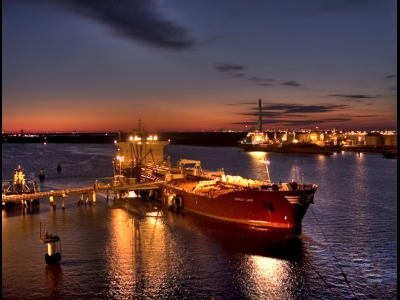Highlights in 2011
Vessel Arrivals and Examinations Increased, Detentions Decreased
In 2011, a total of 9,326 individual vessels, from 85 different Flag Administrations, made 79,031 port calls to the United States. The Coast Guard conducted 10,129 SOLAS safety exams and 8,909 ISPS exams on these vessels. The total number of ships detained in 2011 for environmental protection and safety related deficiencies decreased from 156 to 97. The total number of ships detained in 2011 for security related deficiencies decreased from 17 to 15.
Flag Administration Safety Performance Improved
Flag Administration safety performance for 2011 improved sharply from the previous year, with the annual detention rate decreasing from 1.67% to 1.04%. The 3-year rolling detention ratio also droppedfrom 1.86% to 1.53%. The Flag Administrations of Antigua and Barbuda, Belgium, Croatia, India and the Republic of Korea were all removed from our Targeted Flag List. We also note that we have added three new Administrations to our QUALSHIP 21 Program and their vessels will be entered into the program, contingent upon the Administration and the vessels meeting other required criteria. Those
three Administrations are the Bahamas, China and the Netherlands. Notification letters have been sent to these Administrations which contain the details of the application process.
Flag Administration Security Performance Continues Improvement
Flag Administration security performance for 2011 continued to improve. The annual Control Action Ratio (CAR) decreased from 0.18% to 0.16%. The 3-year rolling average CAR dropped from 0.23% to 0.18%. Due to the continued excellent Flag Administration security compliance performance, we will
maintain the targeting point level for the Flag Administration Control Action Ratio at 1.50%.
Vessel General Permit Implementation
On March 14, 2011 the U.S. Coast Guard implemented our enforcement regime for the Vessel General Permit (VGP). The VGP identifies 28 different discharges incidental to the normal operation of a vessel. For each discharge, the VGP sets parameters which ships must meet to ensure compliance with our Clean Water Act (CWA) . U.S. Coast Guard Port State Control Officers review documentary items to ensure vessels meet the VGP requirements. Approximately 170 deficiencies were issued to foreign flag vessels from the beginning of enforcement to the end of calendar year 2011. We hope for improvement in this area, as understanding of the VGP requirements improves.
North American and United States Caribbean Sea Emissions Control Areas
The amendments to Annex VI of the International Convention for the Prevention of Pollution From Ships, 1973 as modified by the Protocol of 1978 (MARPOL) which created the North American Emissions Control Area came into force on August 1, 2011. As per MARPOL Annex VI, vessels have one year from the entry into force to fully comply with the requirements. As of August 1, 2012 vessels to which Annex VI applies will be required to use fuels with a sulfur content of less than 1.0% within 200 miles of the designated specific portions of U.S., Canadian and French waters.
It should be noted that amendments to create the United States Caribbean Sea emission control area were adopted in July 2011. However, these amendments will not enter into force until January 1, 2013 and will not become enforceable until January 1, 2014. Additional information on this subject can be found on the U.S. Environmental Protection Agency’s website, www.epa.gov/nonroad/marine/ci/420f10015.htm.
Click here to view the Report
Source: USCG






























































